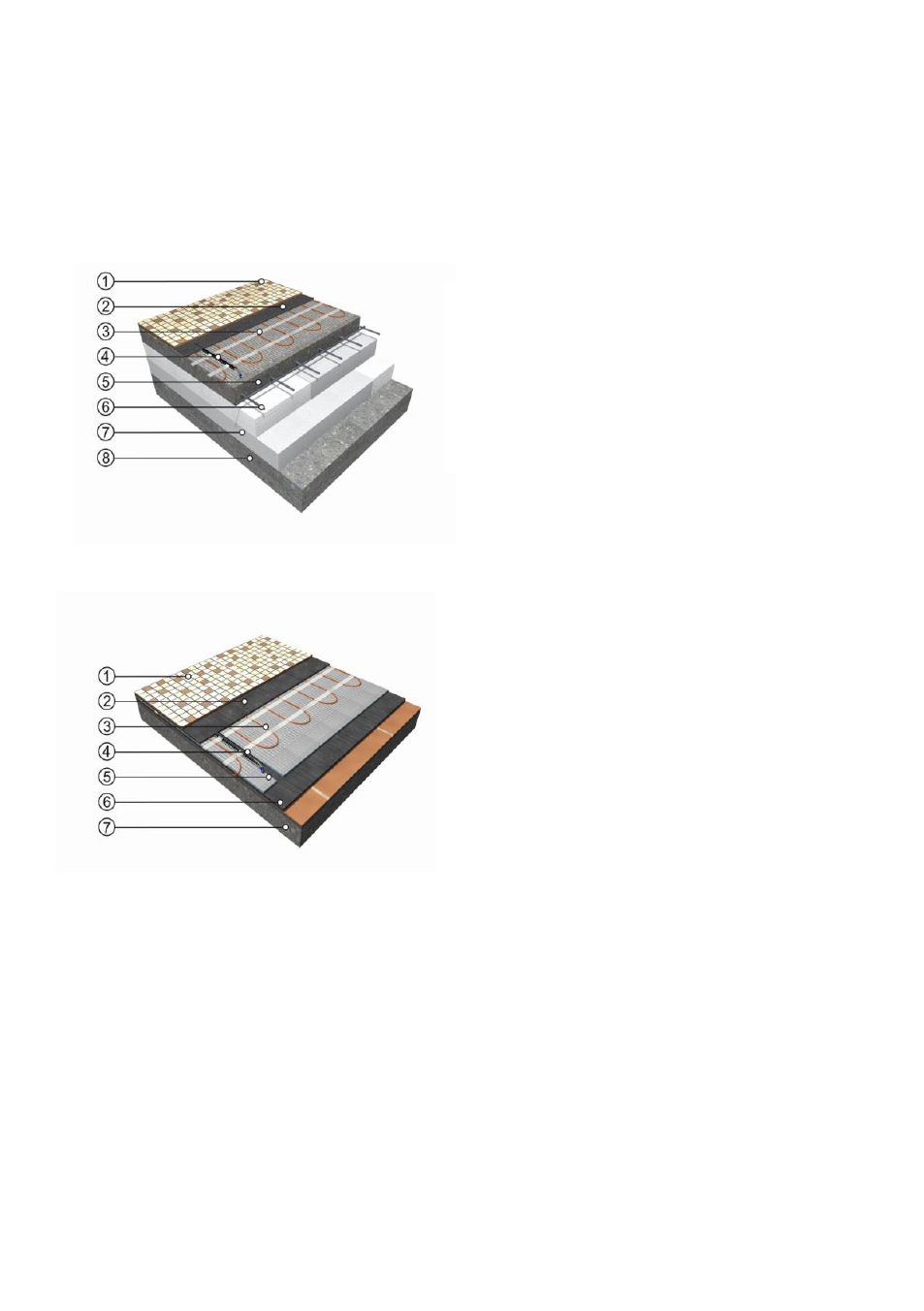D) regulation – Fenix LDTS User Manual
Page 13

13
Before laying the floor tiles, measure the heating circuit values again and record both values in the
certificate of warranty.
Lay the floor tiles onto the surface.
When putting the heating mat into operation, the adhesive sealing cement must be fully hardened (see
instruction for use and recommendation from material’s manufacturer).
Direct heating system – new constructions
Direct heating system – reconstruction
d) Regulation
Thermostats with a floor probe installed in the heating part of the floor, with at least 30 cm within the
heated area, must be used for the thermal regulation of rooms heated using heating circuits/mats.
Place the floor probe of the thermostat as close to the surface of the floor as possible. The probe is
placed into a conduit whose end blocked to prevent ingress of building materials.
In the case of direct-heating applications, the conduit is placed between the loops of the heating cable,
in the centre of a loop. The conduit mustn’t touch or cross the heating cable!
The radius of the bend of the conduit between the wall and the floor must be executed in such a way
that the probe can be exchanged if needed! The recommended minimum bend radius is
6 cm.
The thermostat must be set to the mode: Room + floor temperature limit or Floor.
The maximum allowed floor temperature setting (if the datasheet for the covering used doesn’t state a
lower value):
27°C - rooms which are used for longer periods
35°C - rooms used for shorter periods, with floor tiling
1) Floor tiles
2) Flexible adhesive sealing cement
3) ECOFLOOR heating mat
4) Installation pipe with a floor probe
5) Concrete spread layer 40mm
6) Reinforcing steel grid (KARI)
7) Thermal insulation min. 70–80mm
8) Base
1) New floor tiles
2) Flexible adhesive sealing cement
3) ECOFLOOR heating mat
4) Installation pipe with a floor probe
5) F-BOARD thermal insulation (optional)
6) Flexible adhesive sealing cement
7) Original floor tiles or another base
